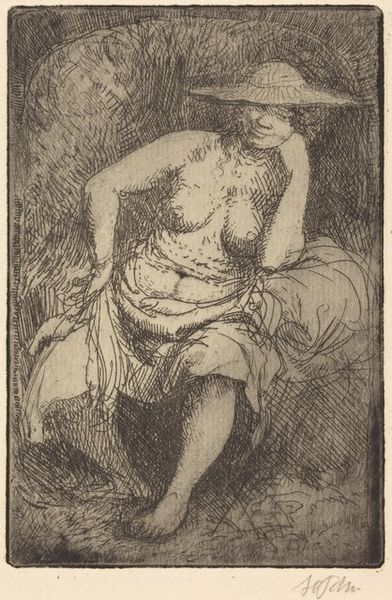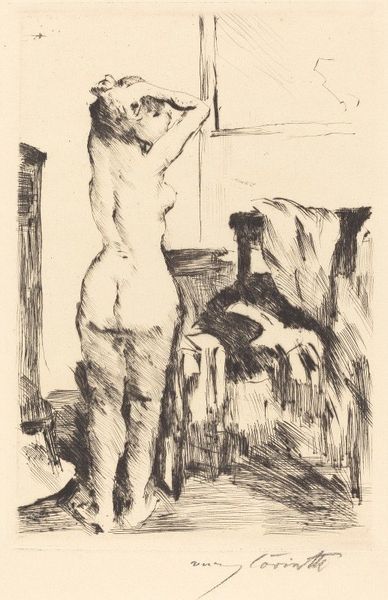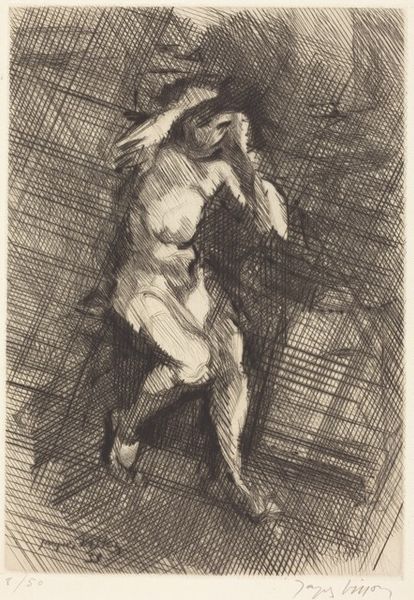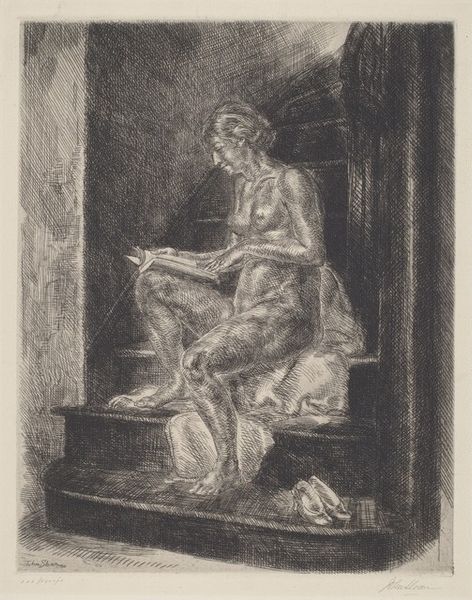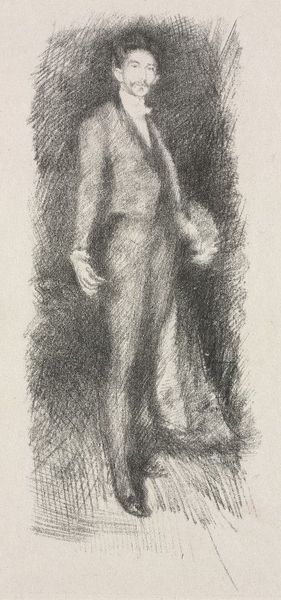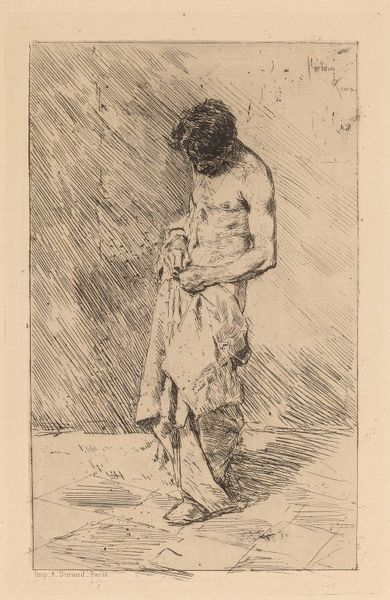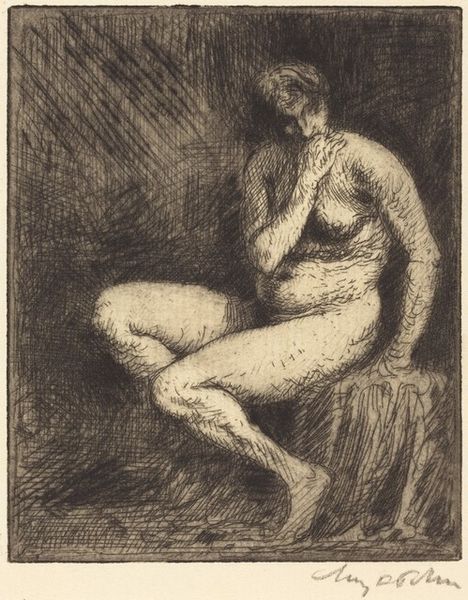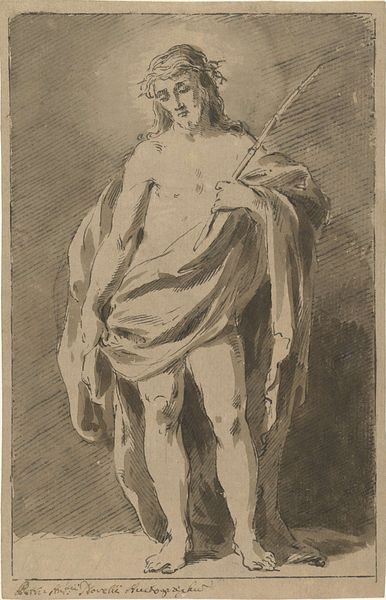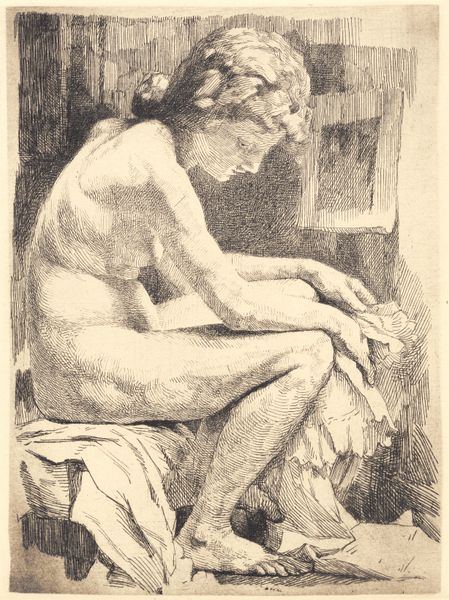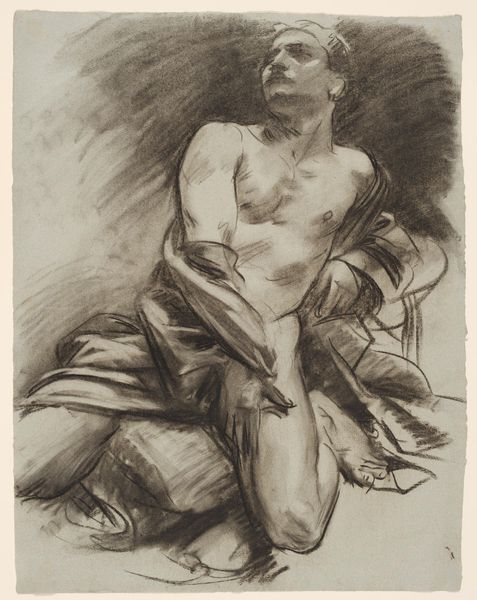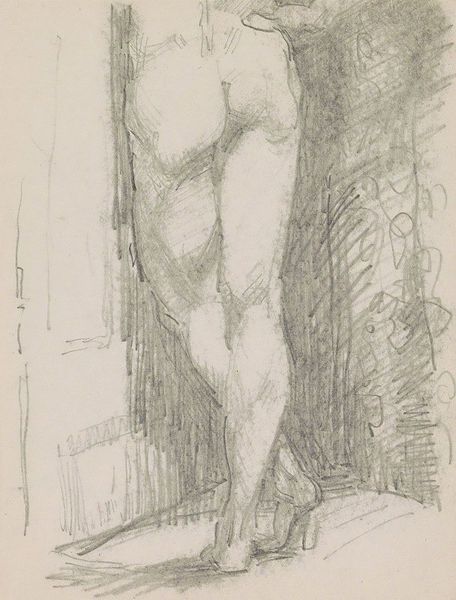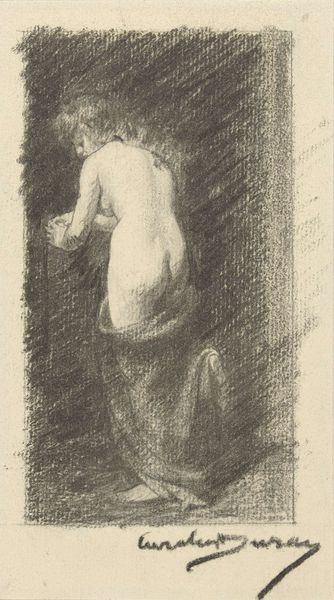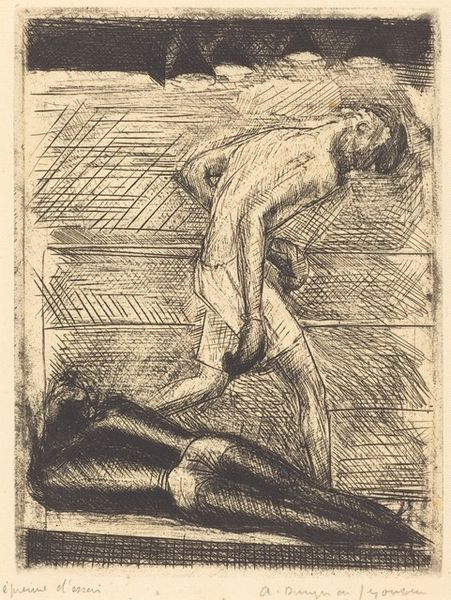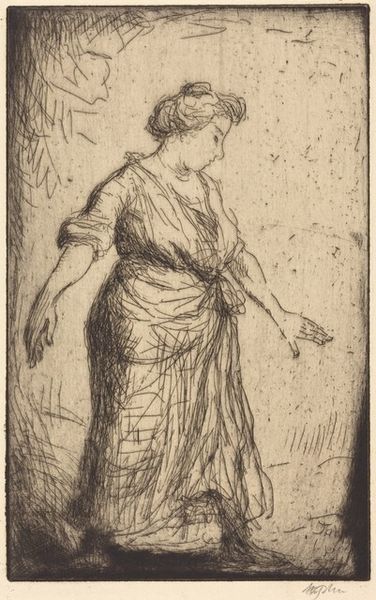
drawing, print, pencil
#
portrait
#
pencil drawn
#
drawing
# print
#
impressionism
#
pencil sketch
#
pencil drawing
#
intimism
#
pencil
#
portrait drawing
#
nude
Dimensions: plate: 11.9 x 7.9 cm (4 11/16 x 3 1/8 in.) sheet: 27.9 x 22.3 cm (11 x 8 3/4 in.)
Copyright: National Gallery of Art: CC0 1.0
Editor: This is Ernest Rouart's "Woman at Her Toilette," a drawing, or perhaps a print of a drawing, in pencil. It feels like we are intruding on a private, almost sacred moment. What visual echoes do you see in this piece? Curator: The immediate symbol that strikes me is the mirror, the *vanitas* emblem. Throughout art history, the mirror symbolizes vanity, yes, but more subtly, self-knowledge and the fleeting nature of beauty and life. Here, Rouart doesn't give us a clear reflection, the face is obscured; it evokes a searching inward, the performative act of readying oneself and facing her true identity. Do you get that sense? Editor: I do now. It makes me think of those old myths where a glimpse into a mirror has powerful, sometimes dangerous consequences. Curator: Exactly. Think of Narcissus, or even Snow White's stepmother! Rouart's woman isn't necessarily vain, but engaged in a ritual, fraught with anticipation. What future self is she crafting in this moment? The pitcher next to her adds another layer: water as purification, or potential for transformation, a symbol echoed across religions. Editor: I see how these commonplace objects are transformed into potent symbols! Curator: Even her pose - head bowed, hand touching her leg - evokes vulnerability but also self-possession. Notice how the artist positions her just so to draw attention to gesture; it is like a language almost forgotten. What did you find surprising about the work after our discussion? Editor: I came in thinking this was simply a peek into a boudoir, but now I see a much deeper conversation about identity, ritual, and how women see themselves. Thanks for sharing your insights!
Comments
No comments
Be the first to comment and join the conversation on the ultimate creative platform.
